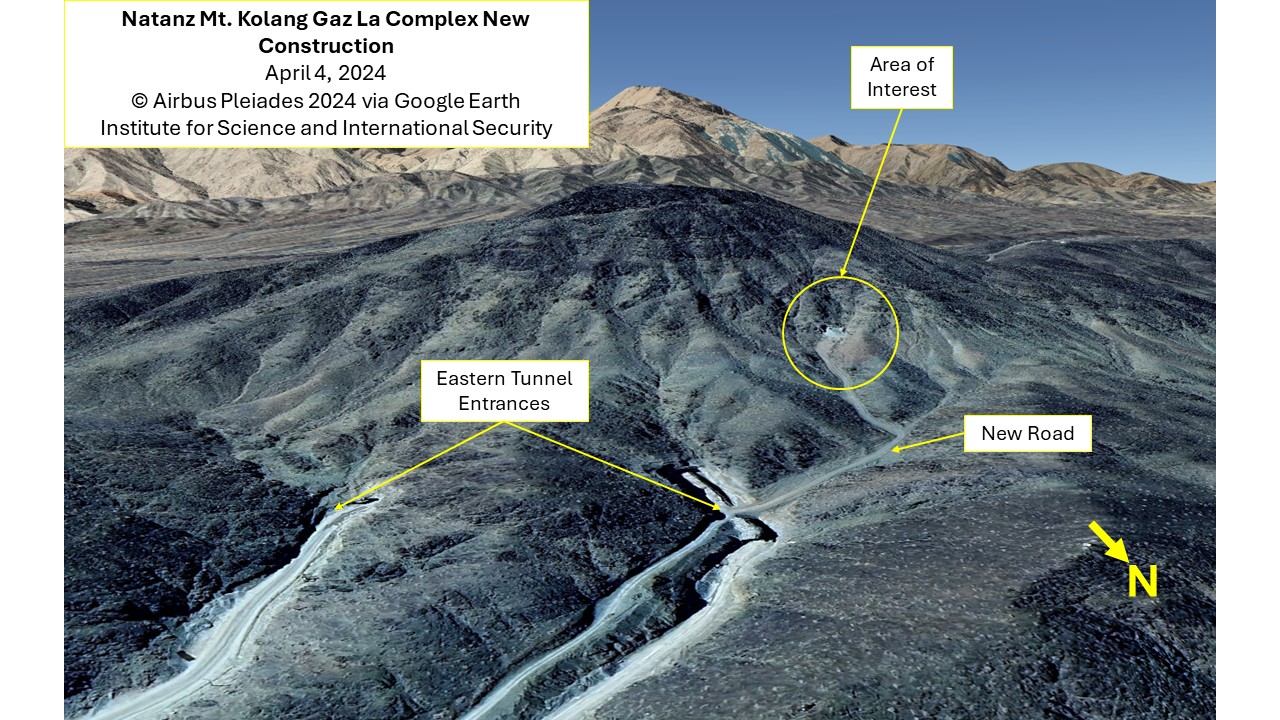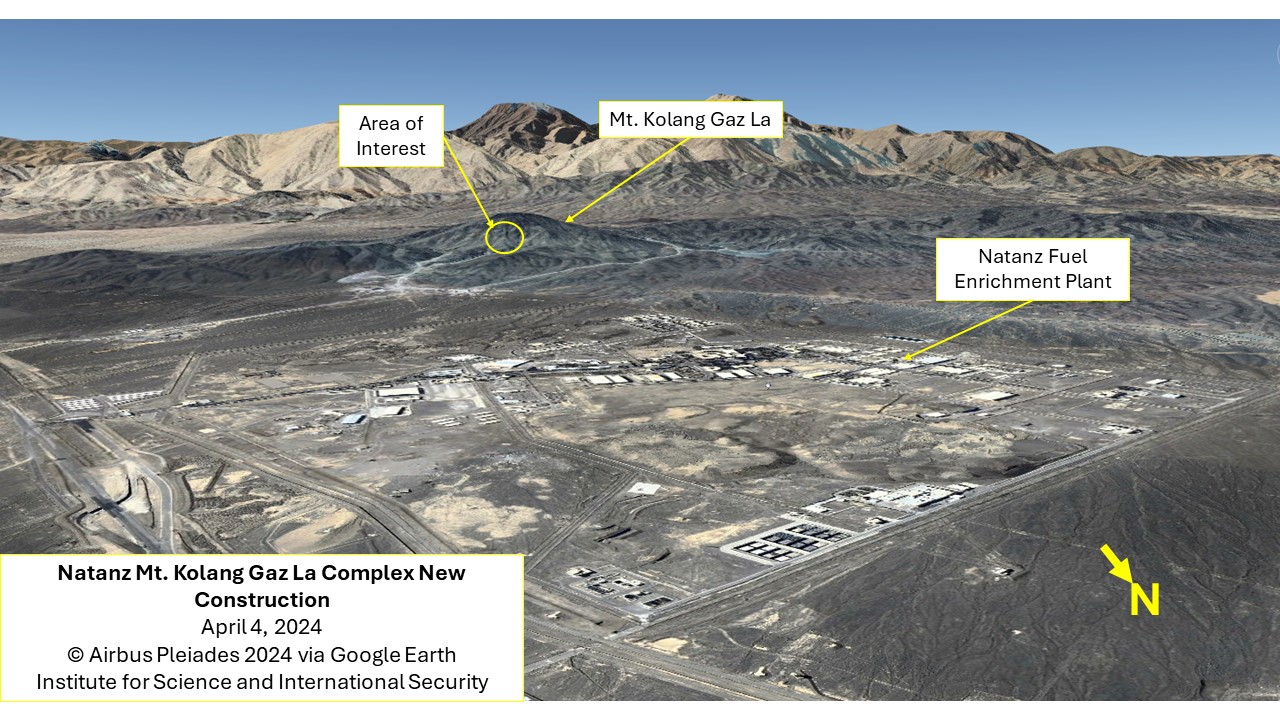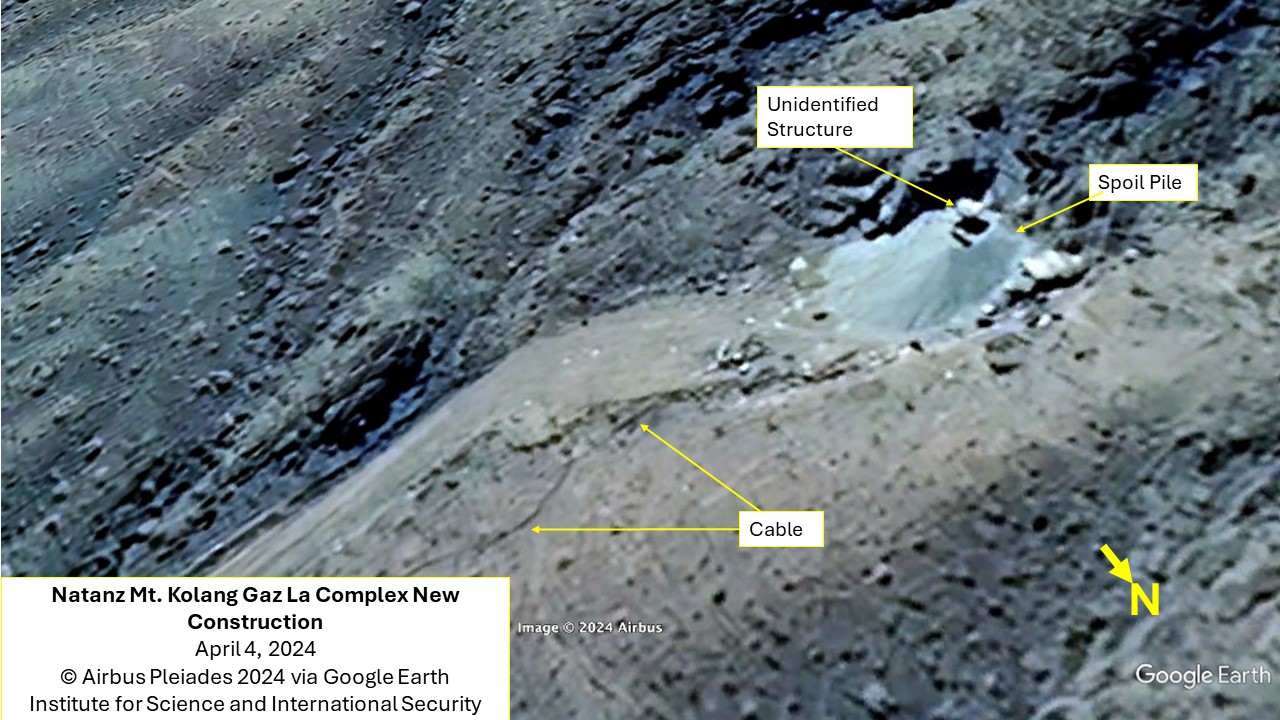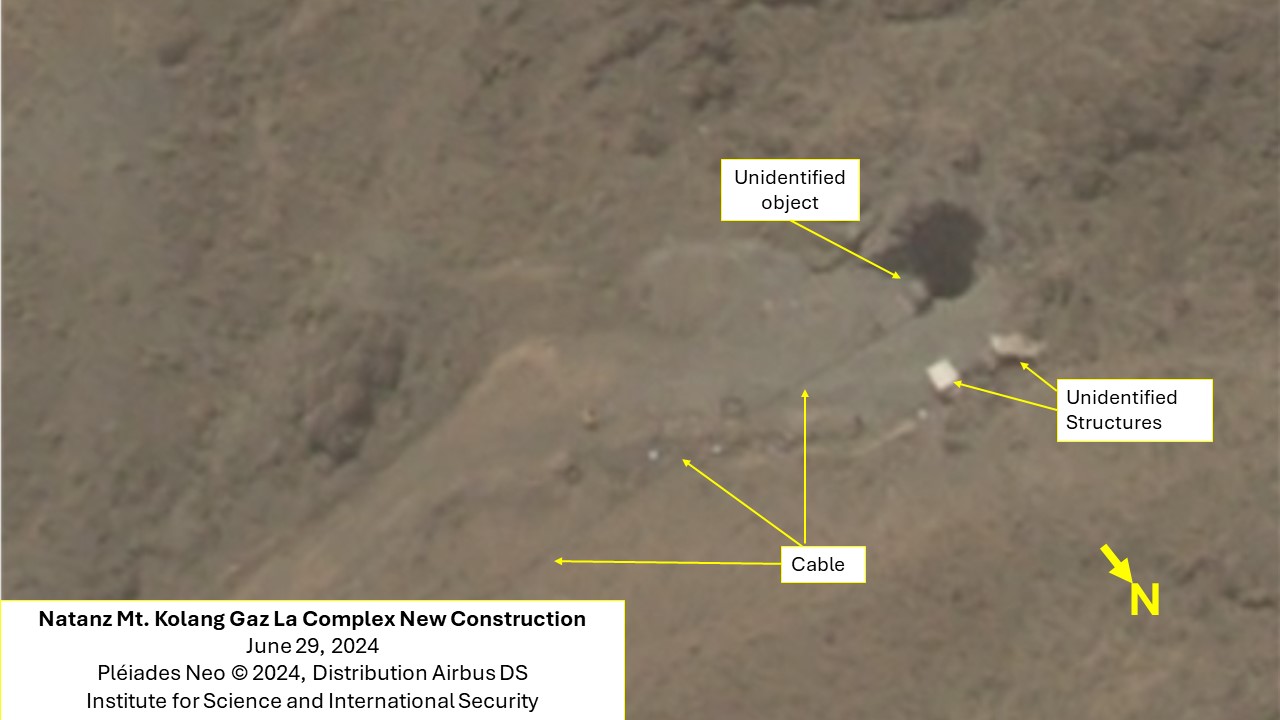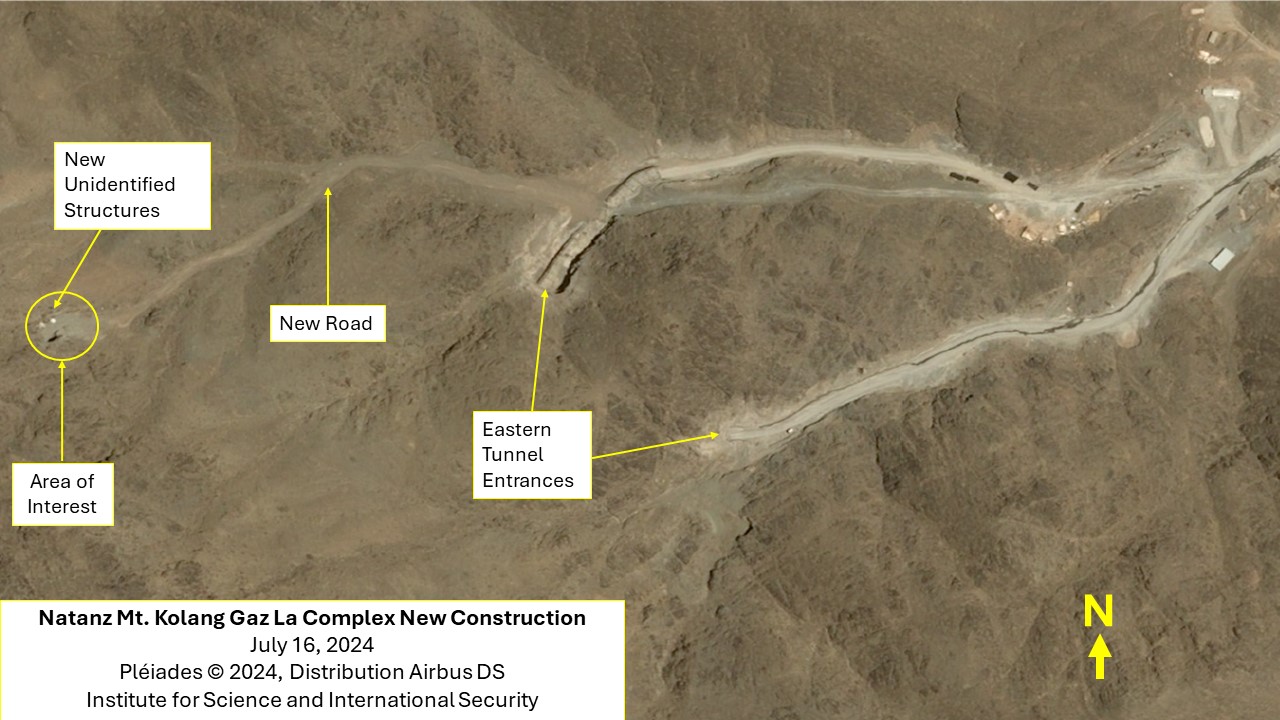Newly detected activity at the Natanz Mt. Kolang Gaz La tunnel complex could be related to the construction of critical ventilation infrastructure for the underground facilities; a crucial feature of any tunnel site where significant human activity is to take place, along with operational machinery and support equipment, particularly for work environments sensitive to dirt and dust, such as centrifuge assembly.
Although the specific type of activity and functional role of this area of interest is still conjectural, and the small currently visible structures are not yet identifiable, the road grading effort to the area up on the mountainside make construction of ventilation structures more likely, especially when considering the location of ventilation structures at the Fordow tunnel site. The initial spoil pile accumulation at the base of a cliff face at the end of the road grading is most indicative of recent local excavation.
Figure 1. A view of the newly identified construction, showing its location on the slope of the mountain in Google Earth's terrain view.
Activity was first detected at the beginning of March 2024. As of mid-July, small unidentified structures remain at the site, including a possible mobile piece of equipment connected to cabling leading down to the tunnel entrances, probably electrical cabling.
The Institute assesses that the tunnel site remains under construction and may not become fully operational in 2024, but the construction of a ventilation shaft would imply construction is advancing. The tunnel entrance roads to the Eastern and Western Tunnels remain unpaved. Paving the roads is expected to become necessary to prevent additional dust, dirt, and other debris from entering the facility (as we have observed to be the case at Fordow). Water is still flowing out of the auxiliary Eastern Tunnel entrance. The auxiliary Eastern Tunnel entrance remains the only entrance that has not seen construction activity such as widening or hardening over the past years, further indicating that Iran encountered construction challenges there.
The Institute will continue to monitor the site, especially for activities that are indicative of the underground facility reaching operational status.[1] To the extent possible, the Institute will also continue to monitor for activities indicative of the purpose of the site, specifically regarding the question whether the site will house the publicly declared centrifuge assembly or also other sensitive nuclear-related activities yet undeclared, where the most worrisome possibility is a small gas centrifuge enrichment plant.[2]
Figures 2 - 5 show satellite imagery from April to July 2024 of the Natanz Mt. Kolang Gaz La underground complex. Figure 6 shows the location and a schematic of Fordow's probable ventilation structure.
Figure 2. The location of the newly identified construction for a probable ventilation shaft vis-a-vis the mountain and the Natanz Fuel Enrichment Plant.
Figure 3. The construction site for a probable ventilation shaft on April 4, 2024.
Figure 4. The construction site of the probable ventilation shaft on June 29, 2024. An additional unidentified object appeared.
Figure 5. The construction in the latest imagery available on July 16, 2024, compared to the location of the two Eastern Tunnel Entrances.
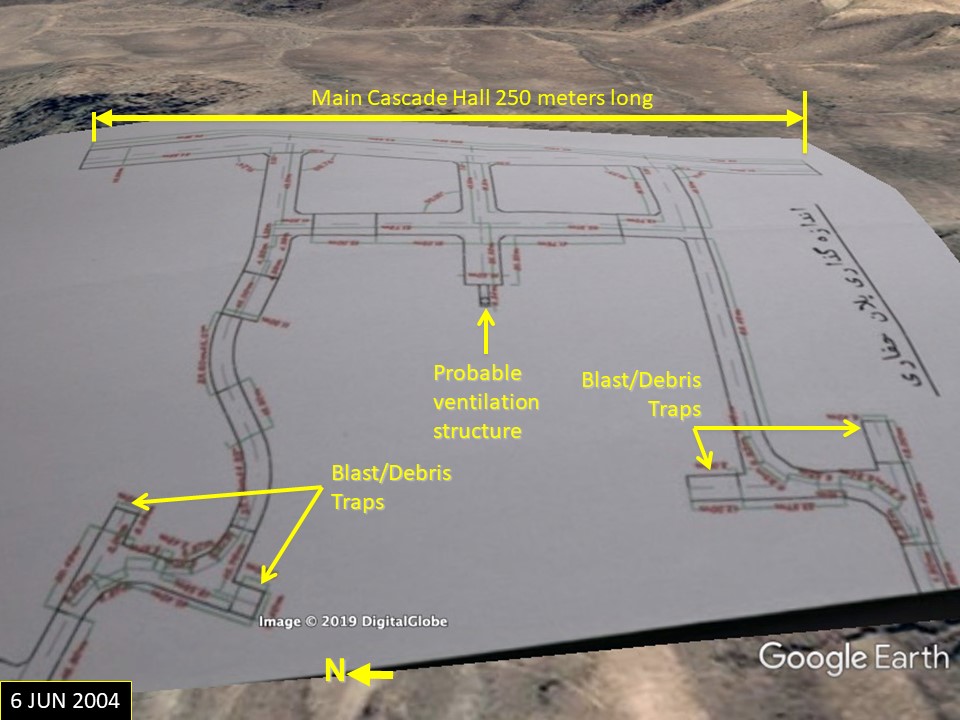
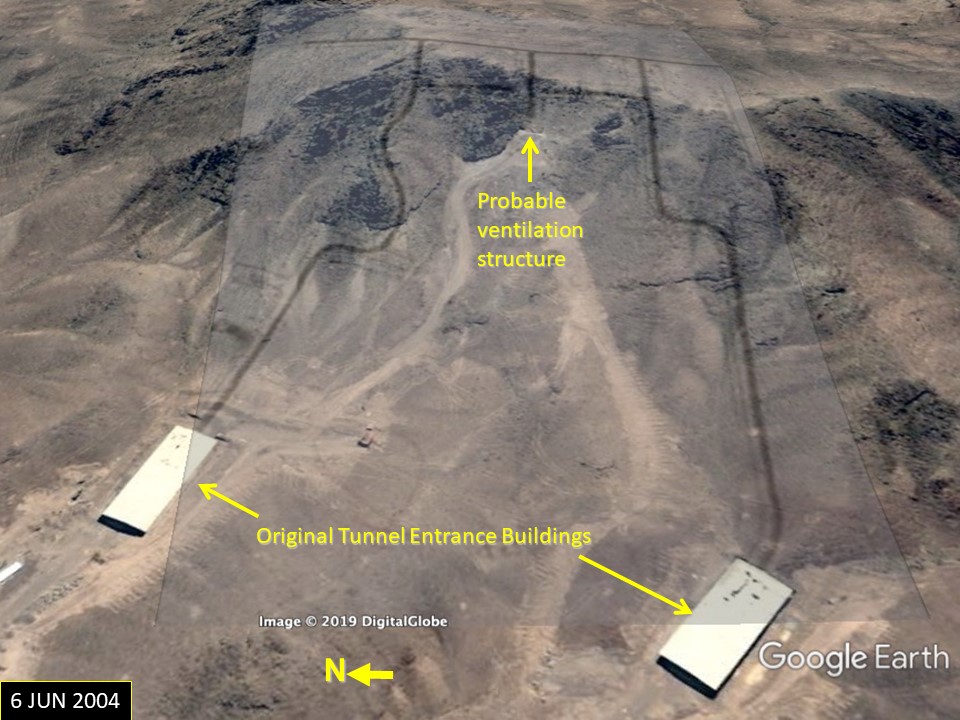
Figure 6. Two images showing a tunnel diagram of the Al Ghadir project (aka Fordow Fuel Enrichment Plant) from the archive and its overlay on a Google Earth image.[3] The ventilation shaft is camouflaged in the bottom image, but the road grading leading up the mountainside is still visible.
1. See the Institute website, https://isis-online.org/countries/category/iran, for earlier imagery studies. [↩]
2. See: David Albright, Sarah Burkhard, and John Hannah, "Iran's Natanz Tunnel Complex: Deeper, Larger than Expected," Institute for Science and International Security, January 13, 2022, https://isis-online.org/isis-reports/detail/irans-natanz-tunnel-complex-deeper-larger-than-expected/8. [↩]
3. David Albright, Frank Pabian, and Andrea Stricker, "The Fordow Enrichment Plant, aka Al Ghadir: Iran's Nuclear Archive Reveals Site Originally Purposed to Produce Weapon-Grade Uranium for 1-2 Nuclear Weapons per Year," Institute for Science and International Security, March 13, 2019,https://isis-online.org/isis-reports/detail/the-fordow-enrichment-plant-aka-al-ghadir/. [↩]

